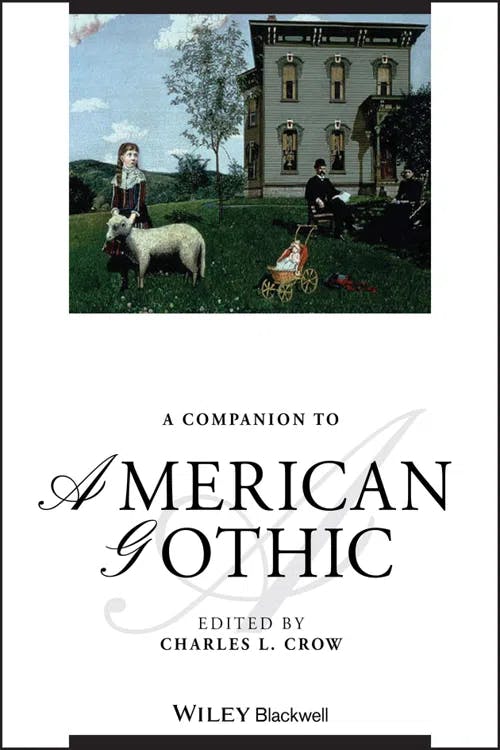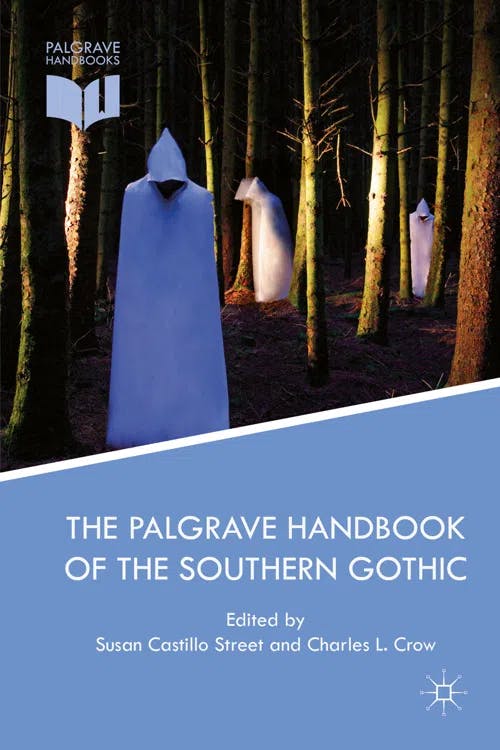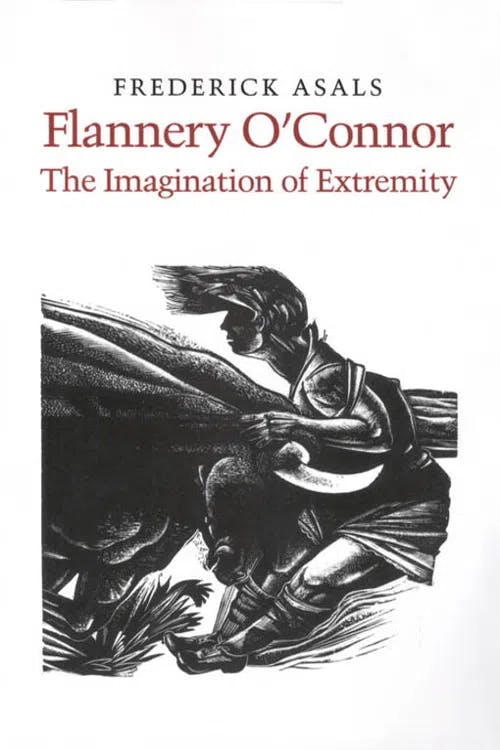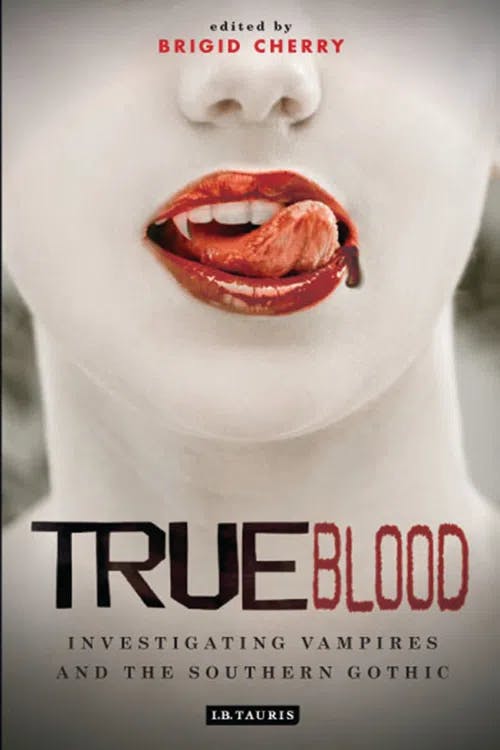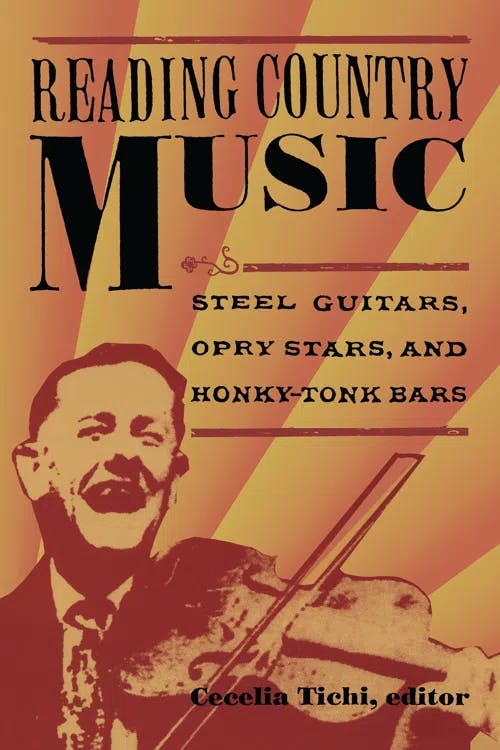What is Southern Gothic?
PhD, Media Arts and English Literature (Royal Holloway, University of London)
Date Published: 19.03.2024,
Last Updated: 05.04.2024
Share this article
Defining Southern Gothic
Southern Gothic is an artistic tradition that draws on gothic tropes, the undead, and the grotesque, where these dark images are used as conduits to explore the tensions that haunt the American South. From the “insufferable gloom” in Edgar Allan Poe’s “The Fall of the House of Usher” (1839, [2017]); to Janie’s life story, propelled by “that oldest human longing—self-revelation” in Zora Neale Hurston’s Their Eyes Were Watching God (1937, [2009]); to nocturnal vampires navigating the hot, humid, and sun-drenched Bon Temps in True Blood (Ball, 2008-2014), Southern Gothic can cut to the (sometimes beating, sometimes undead, sometimes broken) heart of American culture.
Southern Gothic often engages with issues of race, gender, morality, family, politics, religion, memory, and economics to navigate their relationship with history. As Charles L. Crow writes in A Companion to American Gothic (2013), the Gothic is “essential to understanding [American] literature, and indeed our national project.” New work in Southern Gothic Studies uses postcolonial theory to challenge frontier myths, monolithic historical narratives, and idealistic depictions of the Antebellum South. As Crow states:
The dominant, sanctioned history of the United States has been a narrative of social, economic, and technological progress. This narrative also asserts the doctrine of American exceptionalism, the belief that the country’s essential innocence and its destiny place it above the constraints and judgements of other nations and of history. In contrast to this triumphant story, the Gothic is a counter-narrative, an alternative vision, recording fear, failure, despair, nightmare, crime, disease, and madness. The Gothic is that which is left out, what is excluded [...]. (2013)
Edited by Charles L. Crow
The dominant, sanctioned history of the United States has been a narrative of social, economic, and technological progress. This narrative also asserts the doctrine of American exceptionalism, the belief that the country’s essential innocence and its destiny place it above the constraints and judgements of other nations and of history. In contrast to this triumphant story, the Gothic is a counter-narrative, an alternative vision, recording fear, failure, despair, nightmare, crime, disease, and madness. The Gothic is that which is left out, what is excluded [...]. (2013)
(For more on this, see our guides "What is American Exceptionalism?" and "What is the Southern Renaissance?")
The Gothic is a point of convergence for silenced stories of oppression to be heard and their impact felt. Whether this is the eerie creek of a rotting floorboard in Poe’s poetry, the deluge of rainwater in William Faulkner’s As I Lay Dying (1930), the haunting “rememories” in Toni Morrison’s Beloved (1987) or gloomy guitar notes and the violent, religious imagery of Johnny Cash’s American Recordings (1994), the Southern Gothic crafts nightmarish landscapes to explore often traumatic and violent histories.
This guide offers a brief overview of how Southern Studies was formed and how it has changed over the years, before looking at some of the ways these stories are expressed in literature, film, and music, where they draw on different gothic tropes and supernatural apparitions to explore questions about human nature.
From the English Gothic tradition to New Southern Studies
There was a time, as Agnieszka Soltysik Monnet writes, when “the words ‘American’ and ‘Gothic’ seemed so unrelated that putting them together created unpredictable ripples of irony” (The Poetics and Politics of the American Gothic, 2016). The Gothic literary tradition originated in England in the 18th century with Horace Walpole’s The Castle of Otranto as the first self-declared “Gothic Story”(1764, [1996]). This was followed by other texts like Ann Radcliffe’s Gothic romance The Mysteries of Udolpho (1784) and Mary Shelley’s Frankenstein (1818).
So, how does the Gothic tradition relate to the American South? As Jeffrey Andrew Weinstock asks:
What correspondences then could a literary form emphasizing medieval history, ghosts in crumbling castles, emotional extremes, and a debased aristocracy in the late eighteenth and nineteenth centuries with a new country lacking an entrenched class structure and founded on the principles of Enlightenment rationalism, and why does it retain its hold over the American imagination today? (The Cambridge Companion to the American Gothic, 2017)
As Weinstock and many other writers argue, the answers to these questions confront the “premise that America was a place free from history, class relations, and, one might add other forms of social antagonism including race, gender, and religion” as well as the notion of the Gothic as a fixed set of tropes limited to castles and monsters (2017). The Gothic has the capacity to hold, as Allan Lloyd-Smith writes,
the return of the past, of the repressed and denied, the buried secret that subverts and corrodes the present, whatever the culture does not want to know or admit, will not or dare not tell itself. (American Gothic Fiction, 2004)
Allan Lloyd-Smith
the return of the past, of the repressed and denied, the buried secret that subverts and corrodes the present, whatever the culture does not want to know or admit, will not or dare not tell itself. (American Gothic Fiction, 2004)
The American Gothic emerged in the late 18th and early 19th century, with Charles Brockden Brown’s Wieland (1798). With its murders, mysteries, and religious fanaticism, the text is one of the first American novels to explore what Leslie Fiedler would later describe as the “literature of darkness and the grotesque in a land of light and affirmation” (Love and Death in the American Novel, 1960). Teresa Goddu credits Fiedler as one of the first critics to “discuss the American gothic’s peculiarity and to recognize its social impulse” (Gothic America, 1997).
In Fiedler’s study, he discusses Poe and Faulkner, whose work epitomizes the Southern Gothic; we can see this in the decrepit mansions, madness, and unrest in Poe’s writing, and in the anxious social, racial, and economic ruptures in Faulkner’s fiction, which is often set in ruined plantations and Southern swamps. Undercut with a sinister sense of dread tied to both the place and the past, Goddu states that the
American Gothic is most recognizable as a regional form. Identified with gothic doom and gloom, the American South serves as the nation’s ‘other’, becoming the repository for everything from which the nation wishes to dissociate itself (1997).
As early Southern Studies took shape, its main preoccupations were with, as Jon Smith notes, “folklore, orality, the presence of the past, the sense of place, and the sense of community”, often looking to white male writers and tinted with nostalgia for a lost past (Finding Purple America, 2013). New Southern Studies, on the other hand, is motivated by how these notions of space, memory, and community intersect with issues of race and gender.
In her influential collection of essays, Playing in the Dark, Morrison argued for an analysis of the American Gothic that acknowledged its own history, where
Black slavery enriched the country’s creative possibilities. For in that construction of blackness and enslavement could be found not only the not-free but also, with the dramatic polarity created by skin color, the projection of the not-me. The result was a playground for the imagination. What rose up out of collective needs to allay internal fears and to rationalize external exploitation was an American Africanism—a fabricated brew of darkness, otherness, alarm, and desire that is uniquely American. (1992)
Morrison argues for a grounding of Southern Gothic texts within their historical contexts, so as to be able to discuss the legacy of slavery, colonization, displacement, and patriarchy to interrogate the forms of the racialized “Other”. Current Southern Studies continue this work, whilst also questioning the fixed site of the South itself. As Barbara Ladd notes in her overview of the field, the “present horizon” looks towards
how we are to reimagine the or a South or multiple Souths to take full measure of the significance of alternative memories, histories, and modes of cultural expression. Alterity in the southern United States designates not only the submerged voices of women, minorities, and the poor but also colonial, postcolonial, regional, and transnational textualities obscured by cultural nationalism. (“Literary Studies: The Southern United States,” 2005)
Many critics, including Ladd, suggest current Southern Studies as being situated or “taking shape” at a crossroads (2005). These are intersectional crossroads that look at race, gender, socio-economic background; the complex connections between nation, region, and hemisphere; and between the local and global. These crossroads continue to unsettle easy definitions of region and genre.
Common themes in Southern Gothic
Southern Gothic can be difficult to categorize, but there are a number of motifs that can be seen throughout its corpus. Southern Gothic texts draw on traditional gothic tropes – desolate settings, haunted houses, horror, ghosts, torrents of rain, evil monsters, taboo desires, the grotesque, madness, murder, and nightmares – whilst often subverting them. Indeed, as Carol Margaret Davison in “Southern Gothic: Haunted Houses” writes,
In its Southern manifestations, the haunted house regularly assumes the form of the slave plantation house, a spectralised locale whose materialist substructure is exposed by way of irrepressible ghosts. (The Palgrave Handbook of the Southern Gothic, 2016).
Edited by Susan Castillo Street and Charles L. Crow
In its Southern manifestations, the haunted house regularly assumes the form of the slave plantation house, a spectralised locale whose materialist substructure is exposed by way of irrepressible ghosts. (The Palgrave Handbook of the Southern Gothic, 2016).
By collapsing the setting of the crumbling gothic mansion into the site of the haunted plantation house, Southern Gothic literature forms an uncanny “contact zone” between racialized and gendered bodies, where the past and present touch, living in the same site.
Nature, too, is often used to convey a sense of malice. For example, Faulkner writes of the American South in As I Lay Dying:
That’s the one trouble with this country: everything, weather, all, hangs on too long. Like our rivers, our land: opaque, slow, violent, shaping and creating the life of man in its implacable and brooding image. (1930)
As well as malicious natural landscapes and haunted plantation houses, other common themes of the genre include violence, conflict, morbid humor, and a fascination with the past.
Southern Gothic texts are often fractured by intense violence or a sense of conflict, chaos, and alienation. This is typically accompanied by anxious ideas of morality, Christianity, ideals of Southern honor, and repressed desires, as explored by Gary Biuba in Desire, Violence and Divinity in Modern Southern Fiction (2011). Tensions between the natural and supernatural lurk in the shadows of the Southern Gothic. Ralph Ellison plays with supernatural notions in Invisible Man:
I am an invisible man. No, I am not a spook like those who haunted Edgar Allan Poe [...]. [People] see only my surroundings, themselves, or figments of their imagination – indeed, everything and anything except me. (1952, [2016])
Ellison uses dark humor (commonly seen in Southern Gothic) to undercut ideas of the supernatural and discuss the everyday monsters that are grounded in the reality of racism. Deeply flawed, evil, or unstable characters populate the Southern Gothic, often driven by dark urges and uncontainable desires, whether this is “The Misfit” in Flannery O’Connor’s A Good Man Is Hard To Find (1953) or the sadistic Ray Marcus in Nocturnal Animals (Ford, 2016).
Southern Gothic literature
Southern Gothic texts also engage with the lingering after-effects of the past. As Faulkner writes in Requiem for a Nun: “The last is never dead. It’s not even past” (1951, [2015]). The pain and power of the past can be felt in a number of ways. For example, Morrison’s Beloved explores the pain of the past through hauntings and “rememories”; True Blood’s undead vampire Bill Compton was a Confederate soldier in the Civil War; and True Detective (Fukunaga, 2014) begins its fifth episode by reopening a cold case, in which Rust Cohl states:
This is a world where nothing is solved. You know, someone once told me time is a flat circle. Everything we’ve ever done or will do, we’re going to do over and over and over again.(“The Secret Fate of All Life”)
Southern Gothic literature
Southern Gothic literature is often driven by a struggle for life and death, in its attempts to depict a country which – as Zachary Michael Jack notes – is “uniquely conservant with life’s end” (The Haunt of Home, 2020). This tension is expressed in several ways: through violence, hauntings, the grotesque, crises of faith, and questions of morality. Morrison, Hurston, Richard Wright, Faulkner, Poe, Carson McCullers, Cormac McCarthy, Tennessee Williams, Truman Capote, Barry Hannah, William Gay, Ron Rash, Dorothy Allison, and O’Connor are all writers that experiment with the Southern Gothic, weaving a sense of evil and foreboding through their works.
In O’Connor’s fiction, this sense of evil is combined with religious fundamentalism and the question of redemption. Hers is a fiction of extremes. Not only does her work depict extreme forms of violence, but her morbidly comic characters navigate chasms between right and wrong, good and evil, life and death, body and mind, belief and disbelief, and matter and spirit. As Frederick Asals notes, these conflicting extremes are rarely resolved:
Rather than merging, blending, informing one another, they are sustained in a set of vibrant tensions that seem to open even wider, to strain furiously toward a breaking point. (Flannery O’Connor: The Imagination of Extremity, 2011)
Frederick Asals
Rather than merging, blending, informing one another, they are sustained in a set of vibrant tensions that seem to open even wider, to strain furiously toward a breaking point. (Flannery O’Connor: The Imagination of Extremity, 2011)
Set in the backwoods of Georgia, strewn with run-down restaurants, graveyards, and old plantations, A Good Man Is Hard To Find follows a family holiday that ends in violence. An escaped convict referred to as “The Misfit” and his men murder the family; the story ends with The Misfit’s crisis on hearing the “grandmother” pray for her life. O’Connor has described the ending as a moment of divine “Grace” (The Habit of Being, 1980), where the grandmother reaches out:
“Why you’re one of my babies. You’re one of my own children!”
She reached out and touched him on the shoulder. The Misfit sprang back as if a snake had bitten him and shot her three times through the chest. (A Good Man Is Hard To Find, 1953)
The bleak end, overrun with religious existentialism, death, and questions of meaning, along with the grandmother’s memories of the Antebellum South, are all emblematic of Southern Gothic literature, which concludes with The Misfit’s grim note: that there is “no real pleasure in life” (1953).
Film and television
From the adaptation of A Streetcar Named Desire (Kazan, 1951) dealing with themes of violence, sex, and madness to contemporary television like Outer Banks (Pate, Pate, and Burke, 2020), Southern Gothic cinema depicts the violence and seething tensions of the genre. True Blood consciously plays with the Gothic to dramatize questions of morality, passion, religion, race, gender, and poverty, where Stacey Abbott notes,
[the character's] pleasures are entangled with the Southern Gothic elements of the series, where characters cannot escape their past, are oppressed in numerous ways, and the ‘monstrous’ is an everyday attraction and disturbance. (“TV Loves Fangs,” True Blood, 2012).
Edited by Brigid Cherry
[the character's] pleasures are entangled with the Southern Gothic elements of the series, where characters cannot escape their past, are oppressed in numerous ways, and the ‘monstrous’ is an everyday attraction and disturbance. (“TV Loves Fangs,” True Blood, 2012).
Splicing sex, religion, and death together in the title sequence below, True Blood is steeped in Southern Gothic. Fragments of nude bodies, lingerie, church services, a woman being baptized at night, the sped-up maggoty decay of a dead fox, and a young child dressed in a Ku Klux Klan robe, are all thrown together to create the tense parallels and extremes of the Southern Gothic, as Jace Everett sings the refrain, “I wanna do bad things with you.”
Music
Notes of Southern Gothic can be heard throughout many different forms of music. Predominantly found in country music – or dark country, the Denver sound, or gothic Americana, as it is sometimes called – Southern Gothic music is influenced by bluegrass, jazz, gospel, rock, and punk. The bittersweet subject matter picks up Southern Gothic themes such as religious imagery, sin, intergenerational conflict, love, murder, violence, ghosts, betrayal, mistrust, alcoholism, poverty, and death, often using these elements to deconstruct the American Dream. Goddu highlights the gothic aspects of country songs like the cold deathly embrace of “Barbara Allen”, Tanya Tucker’s “Delta Dawn,” and “We Bury the Hatchet” by Garth Brooks:
Gothic elements in mainstream country music have long reflected its “dark side,” Southern Gothic tradition. Artists of the 1990s continue to mine the gothic vein in such songs as Garth Brooks’s “We Bury the Hatchet” where a couple continues to dig up old hurts because they bury the hatchet with the handle “sticking out,” or Randy Travis’s “Before You Kill Us All,” which compares a woman walking out on a man (even though he is in the wrong) to murder (if she doesn’t come back, she will “kill” him). (“Bloody Daggers and Lonesome Graveyards,” Reading Country Music, 1998)
Edited by Cecelia Tichi
Gothic elements in mainstream country music have long reflected its “dark side,” Southern Gothic tradition. Artists of the 1990s continue to mine the gothic vein in such songs as Garth Brooks’s “We Bury the Hatchet” where a couple continues to dig up old hurts because they bury the hatchet with the handle “sticking out,” or Randy Travis’s “Before You Kill Us All,” which compares a woman walking out on a man (even though he is in the wrong) to murder (if she doesn’t come back, she will “kill” him). (“Bloody Daggers and Lonesome Graveyards,” Reading Country Music, 1998)
Ethel Cain’s concept album The Preacher’s Daughter (2022) uses pop, folk, slowcore, metal, and Americana to create a melancholic Southern Gothic epic. It follows the story of Ethel and her troubled relationship with her faith: “Jesus, if you’re there / Why do I feel alone in this room with you?” (Cain, "American Teenager," 2022). She then escapes from her family where she meets Isaiah who asks her “Do you want to see the West with me?” (Cain, "Thoroughfare," 2022). Isaiah then violently murders her in an act of cannibalism: “Freezer bride, your sweet divine / You devour like smoked bovine hide”(Cain, "Strangers", 2022). The album then ends with Ethel waiting in Heaven for her mother to join her as Cain sings “Mama, just know that I love you, I do / And I’ll see you when you get here” (Cain, "Strangers," 2022).
Cain uses elements of the grotesque, sex, Christianity, and intergenerational trauma to construct an ethereal and powerful mediation on the lives and afterlives of small towns in America.
Conclusion
From the early American Gothic horrors in the 18th century to contemporary experiments like Ethel Cain’s song “August Underground” (2022) or Jesmyn Ward’s novel Sing, Unburied, Sing (2017), Southern Gothic art continues to unearth and explore the manifold issues of the South’s past. The proliferation of critical interest in Southern Gothic in recent years is a testament to the genre’s powerful ability to address not only historical issues but present, pertinent, and ongoing ones, too.
Further reading on Perlego
Ancuta, K. and Valaniūnas, D. (2021) South Asian Gothic: Haunted cultures, histories and media. University of Wales Press. Available at: https://www.perlego.com/book/3040219/south-asian-gothic-haunted-cultures-histories-and-media-pdf
Casanova-Vizcaíno, S. and Ordiz, I. (2017) Latin American Gothic in Literature and Culture. Taylor & Francis. Available at: https://www.perlego.com/book/1498166/latin-american-gothic-in-literature-and-culture-pdf
Edwards, J. and Vasconcelos, S. (2016) Tropical Gothic in Literature and Culture: The Americas. Taylor and Francis. Available at: https://www.perlego.com/book/1633342/tropical-gothic-in-literature-and-culture-the-americas-pdf
Duncan, R. (2018) South African Gothic: Anxiety and Creative Dissent in the Post-apartheid Imagination and Beyond. University of Wales Press. Available at: https://www.perlego.com/book/743264/south-african-gothic-anxiety-and-creative-dissent-in-the-postapartheid-imagination-and-beyond-pdf
Jack, Z. M. (2020) The Haunt of Home: A Journey through America’s Heartland. Cornell University Press. Available at: https://www.perlego.com/book/1352036/the-haunt-of-home-a-journey-through-americas-heartland-pdf
Raymond, C. (2019) Witnessing Sadism in Texts of the American South: Women, Specularity and the Poetics of Subjectivity. Taylor and Francis. Available at: https://www.perlego.com/book/1376984/witnessing-sadism-in-texts-of-the-american-south-women-specularity-and-the-poetics-of-subjectivity-pdf
Wester, M. (2012) African American Gothic: Screams from Shadowed Places. Palgrave Macmillan. Available at: https://www.perlego.com/book/3508111/african-american-gothic-screams-from-shadowed-places-pdf
External resources
Hogle, J. E. (2002) The Cambridge Companion to Gothic Fiction. Cambridge University Press.
Frederick, F. S. (1990) Through the Pale Door: A Guide to and through the American Gothic. Greenwood Press.
Morgan, J. (2002) The Biology of Horror: Gothic Literature and Film. Southern Illinois University Press.
O’Connor, F. (2014) Mystery and Manners: Occasional Prose. Faber & Faber.
What is Southern Gothic in simple terms?
What are the characteristics of the Southern Gothic?
What are some examples of Southern Gothic novels?
Bibliography
Abbott, S. (2012) “TV Loves Fangs,” in Cherry, B. (ed.) True Blood: Investigating Vampires and the Southern Gothic. Bloomsbury. Available at: https://www.perlego.com/book/919488/true-blood-investigating-vampires-and-southern-gothic-pdf
Asals, F. (2011) Flannery O’Connor: The Imagination of Extremity. University of Georgia Press. Available at: https://www.perlego.com/book/839106/flannery-oconnor-the-imagination-of-extremity-pdf
Brown, C. B. (1997) Wieland; Or, The Transformation. Perlego. Available at: https://www.perlego.com/book/1817265/wieland-or-the-transformation-an-american-tale-pdf
Crow, C. L. (2013) A Companion to American Gothic. Wiley. Available at: https://www.perlego.com/book/1004015/a-companion-to-american-gothic-pdf
Davison, C. M. (2016) “Southern Gothic: Haunted Houses,” in Street, S. C. and Crow, C. (eds.) The Palgrave Handbook of the Southern Gothic. Palgrave Macmillan. Available at: https://www.perlego.com/book/3489280/the-palgrave-handbook-of-the-southern-gothic-pdf
Ellison, R. (1952) Invisible Man. Penguin
Faulkner, W. (1930) As I Lay Dying. PostScript Books
Faulkner, W. (2018) Requiem for a Nun. Random House
Fiedler, L. (1960) Love and Death in the American Novel. Criterion
Goddu, T. (1997) Gothic America: Narrative, History, and Nation. Columbia University Press
Goddu, T. (1998) “Bloody Daggers and Lonesome Graveyards: The Gothic and Country Music,” in Tichi, C. (ed.) Reading Country Music: Steel Guitars, Opry Stars and Honky Tonk Bars. Duke University Press. Available at: https://www.perlego.com/book/1466378/reading-country-music-steel-guitars-opry-stars-and-honky-tonk-bars-pdf
Hurston, Z. N. (2009) Their Eyes Were Watching God. HarperCollins. Available at: https://www.perlego.com/book/582431/their-eyes-were-watching-god-pdf
Jack, Z. M. (2020) The Haunt of Home: A Journey Through America’s Heartland. Cornell University Press. Available at: https://www.perlego.com/book/1352036/the-haunt-of-home-a-journey-through-americas-heartland-pdf
Ladd, B. (2005) “Literary Studies: The Southern United States, 2005,” PMLA, 120.5
Lloyd-Smith, A. (2004) American Gothic Fiction: An Introduction. Bloomsbury. Available at: https://www.perlego.com/book/818333/american-gothic-fiction-an-introduction-pdf
Monnet, A. S. (2016) The Poetics and Politics of the American Gothic: Gender and Slavery in Nineteenth-Century American Literature. Taylor and Francis. Available at: https://www.perlego.com/book/1633124/the-poetics-and-politics-of-the-american-gothic-gender-and-slavery-in-nineteenthcentury-american-literature-pdf
Morrison, T. (1987) Beloved. Penguin.
Morrison, T. (1992) Playing in the Dark: Whiteness and the Literary Imagination. Harvard University Press.
O’Connor, F. (2019) A Good Man Is Hard To Find, And Other Stories. Faber.
O’Connor, F. (1988) The Habit of Being. Macmillan.
Poe, E. A. (2017) "The Fall of the House of Usher," in The Complete Tales by Edgar Allan Poe. Delphi Classics. Available at: https://www.perlego.com/book/1655026/the-complete-tales-by-edgar-allan-poe-delphi-classics-illustrated-pdf
Radcliffe, A. (2014) The Mysteries of Udolpho. Open Road Media. Available at: https://www.perlego.com/book/2392998/the-mysteries-of-udolpho-pdf
Shelley, M. (2012) Frankenstein. 3rd edn. Broadview Press. Available at: https://www.perlego.com/book/2029915/frankenstein-third-edition-pdf
Smith, J. (2013) Finding Purple America: The South and the Future of American Cultural Studies. University of Georgia Press. Available at: https://www.perlego.com/book/839483/finding-purple-america-the-south-and-the-future-of-american-cultural-studies-pdf
Villares, L. (2017) Examining Whiteness: Reading Clarice Lispector Through Bessie Head and Toni Morrison. Taylor and Francis. Available at: https://www.perlego.com/book/1497471/examining-whiteness-reading-clarice-lispector-through-bessie-head-and-toni-morrison-pdf
Walpole, H. (1996) The Castle of Otranto. Perlego. Available at: https://www.perlego.com/book/1728598/the-castle-of-otranto-pdf
Ward, J. (2017) Sing, Unburied, Sing. Scribner. Available at: https://www.perlego.com/book/1209291/sing-unburied-sing-a-novel-pdf
Weinstock, J. A. (2017) The Cambridge Companion to the American Gothic. Cambridge University Press.
Filmography
A Streetcar Named Desire. (1951) Directed by Elia Kazan. Warner Bros.
Outer Banks. (2020) Created by Josh Pate, Jonas Pate, and Shannon Burke. Netflix
Nocturnal Animals. (2016) Directed by Tom Ford. Fade to Black Productions
True Detective. (2014) Directed by Cary Joji Fukunaga. HBO
Music and audio
Brooks, G. (1991) “We Bury the Hatchet,” Ropin’ the Wind. Capitol Nashville
Cain, E. (2022) The Preacher’s Daughter. Daughters of Cain.
Cash, J. (1994) American Recordings. American Recordings.
Tucker, T. (1972) “Delta Dawn,” Delta Dawn. Columbia
PhD, Media Arts and English Literature (Royal Holloway, University of London)
Polly Hember is a researcher, writer, and visiting tutor working on modernism and queer networks. She holds a PhD in Media Arts and English Literature from Royal Holloway, University of London, where her doctoral thesis attended to the neglected literary works of “the POOL group”. Her research interests include twentieth-century literature, queer theory, affect studies, technology, and visual cultures. She has published in Modernist Cultures and Hotel Modernisms (Routledge, 2023), and currently co-hosts the Modernist Conversations podcast.

